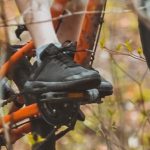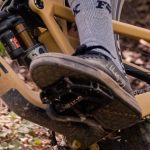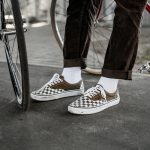When getting into mountain biking, one of the many gear questions riders face is whether or not they need special mountain bike shoes. Regular athletic shoes may seem like they would work just fine for biking around on trails. However, there are some clear benefits to using shoes specifically designed for mountain biking. Looking at the key features of these shoes can help riders decide if investing in them is really necessary or simply an optional upgrade.
Improved Pedal Grip
One of the biggest reasons to use mountain bike shoes is that they provide a much better grip on the pedals. The soles have a rigid and grippy material, usually made of rubber with treads and indentation patterns. This helps keep the rider’s feet firmly planted on the pedals without slipping off. The stiff sole also allows more efficient power transfer when pedaling.
In contrast, regular sneakers and athletic shoes have flexible, smoothed soles not suited for digging into pedals. Especially when riding over rough terrain, bounced around on a mountain bike, feet are more likely to bounce off the pedals without shoes designed to stick. This can cause issues like sore arches from trying to grip tightly and not getting ideal leverage.
So for mountain biking, having shoes that hold tight to pedals can make a big difference in power, stability, and fatigue over long rides. The extra grip also allows riders to tackle more technical trails confidently without worrying about feet coming loose at inopportune moments.
Integration With Clipless Pedals
Another key benefit of mountain bike shoes is that they let riders use clipless pedals for even more power and control. Clipless pedals require a cleat on the bottom of shoes to lock into the pedal securely. While tricky at first, this clip-in system becomes very beneficial once mastered.
With shoes and pedals working together as one solid unit, riders can pull up as well as push down for maximum pedaling efficiency. This is especially helpful when grunting up steep hills or trying to pedal through sandy sections. The firm connection also prevents feet from bouncing or slipping off pedals as easily over obstacles.
Using clipless pedals does require some extra gear and practice clipping in and out. However, the advantages tend to make them very popular for more experienced mountain bikers. And special cycling shoes are necessary to interface with these pedals properly.
Injury Prevention With Stiff Soles
Additionally, having stiff and supportive soles can actually help prevent certain overuse injuries compared to flimsy sneakers. Mountain biking involves lots of pedaling power through ankles, knees, and hips at all sorts of angles. Shoes with inadequate arch and sole support can lead to pain in those joints over time, especially on longer rides.
But mountain bike shoes provide that needed support, almost like built-in braces. The firmer material running the length of quality biking shoes helps transfer energy in a biomechanically safe way. This keeps all the interconnected joints, tendons, and muscles stabilized protects them from damage.
So while casual riders may get away with everyday athletic shoes, riders wanting to take on more challenging mountain terrain can benefit injury-prevention wise from a quality pair of performance mountain bike shoes.
Better Hiking When Unclipped
An additional small perk of clipless mountain bike shoes is that they can provide a bit of extra grip and stability when unclipped from pedals. Whether hiking bike up an obstructed trail or exploring around off the bike, rubberized soles with some tread pattern tend to perform better than average sneaker treads.
The stiff midsole also offers more underfoot protection when stepping over rocky terrain. So the same shoe features that aid pedaling power also provide a bit more secure footing for shoe-to-ground contact off the bike.
Key Features To Look For
Now that some of the major advantages are clear, what should riders look for if deciding to purchase mountain bike shoes? Some key criteria to keep in mind when shopping:
- Stiff midsole – This allows maximum power transfer while pedaling without losing energy flexing excessively. Carbon fiber and nylon are common stiffening materials used.
- Grippy rubber outsole – Durable rubber compound with aggressive lug pattern helps dig into pedals and trails while hiking. Sticky rubber also prevents slips on rocks.
- Reinforced toe cap – Protects from trail debris impact with extra barrier over toe box. Prevents painful stubs and lost nails.
- Breathable uppers – Mesh panels and ventilation ports keep feet from overheating and blistering on extended rides.
- Easy closures – Secure hook-and-loop straps or small ratcheting dials allow fit fine-tuning and quick on-off. Important for clipless compatibility.
Considering these criteria and personal preferences, there are mountain bike shoes available for almost every riding style and budget.
Final Thoughts
At first brush, mountain bike shoes can seem like costly overkill for the casual off-road rider. However, the clear pedaling, performance, and comfort benefits they provide make them a smart investment for those progressing into more committed and demanding mountain biking.
They offer enhanced power and stability over the pedals, prevent injury by supporting joints, and work seamlessly with high-end clipless pedals. Yet they still provide enough grip and traction when unclipped and hiking around the trails. Modern designs also incorporate breathability, weather protection, and walkability.
So while baggy shorts and basic sneakers have their place for mellow rides, riders wanting to unlock the full potential of modern mountain bikes will likely appreciate upgrading to proper shoes. Their advantages can be felt all over – powering up climbs, railing bermed corners, absorbing big hits crossing rocky trails. Well-chosen mountain bike shoes really complete the whole integrated riding package.






